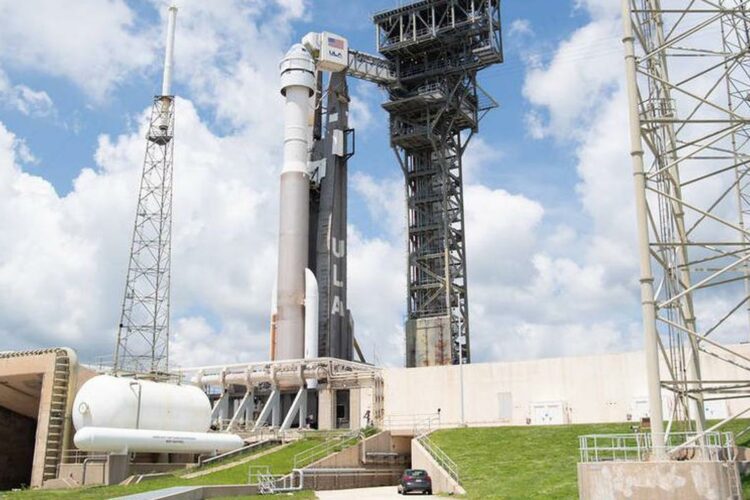The revelation that the valves were shut prompted the scouring of last week’s dispatch. Boeing said it actually expects a practice run for this present month.
Boeing said Monday that the issue that cleaned the dispatch of its Starliner space apparatus last week was caused when 13 valves in its drive framework neglected to appropriately open during a preflight test, a more boundless issue than was recently known.
Throughout the end of the week, engineers had the option to open seven of those valves and reestablish them to working request, the organization said, and it is as yet confident that it could dispatch the dry run before the month’s over. In any case, Boeing actually doesn’t have the foggiest idea of what caused the issue, which constrained one more deferral in a program that has been tormented by major issues for quite a long time.
Boeing is creating Starliner under an agreement with NASA to fly the space organization’s space travelers to and from the International Space Station. Elon Musk’s SpaceX, the other organization that holds the “business group” contract, has now flown three human spaceflight missions to the space station, yet Boeing has battled with its program and has fallen a long way behind.
Before it flies a test mission with space travelers, Boeing must initially dispatch an uncrewed mission that would exhibit that the self-governing shuttle can get together with the station in a circle, dock, endure the vacuum of room, and afterward fly back to Earth securely. When those achievements are accomplished, NASA would then green light a trip with space explorers ready.
Boeing’s first endeavor at the uncrewed mission, in December 2019, went frightfully amiss as a result of a product glitch that kept the rocket from docking with the station. That ignited an examination by NASA, which said it expected to all the more thoroughly regulate Boeing’s work.
Yet, in the wake of being compelled to remain down for eighteen months, Boeing had said it had fixed those issues and was at long last prepared to fly.
Boeing had been intending to re-try the mission on July 30. Yet, the dispatch was postponed after a Russian module docked with the station however at that point unintentionally terminated its engines, sending the station into a nerve-racking twist.
The Starliner dispatch was rescheduled to Aug. 3, yet Boeing and NASA reported that it would be postponed after it found “sudden valve position signs in the drive framework.” At the time, Boeing said the issue was distinguished get-togethers storms disregarded Cape Canaveral the day preceding the dispatch, leaving open the likelihood that a lightning strike might have been the reason for the issue.
Authorities at NASA, notwithstanding, were suspicious that lightning had any impact, and Boeing moved in an opposite direction from the case, saying in an explanation on Aug. 4 that the tempest “has all the earmarks of being a far-fetched cause.” But it said it “will look carefully for water or electrical harm,” during vehicle reviews.
The space apparatus is as yet mounted on the highest point of the Atlas V rocket, which is worked by the United Launch Alliance, a joint endeavor among Boeing and Lockheed Martin. Conservative Bruno, ULA’s CEO, has said more than once that the issue is with the shuttle, not the rocket.
In a tweet last week, Boeing expressed gratitude toward some of its accomplices, including Aerojet Rocketdyne “for providing and supporting the impetus framework being assessed.” Aerojet Rocketdyne, which is being gained by Lockheed Martin, declined to remark on the tweet for the sure job, assuming any, it has had in the issue.
The valves are a significant piece of the rocket’s capacity to fly. The interface with engines permits the case to cut short in a crisis, and they additionally help the rocket move while in a circle.
To explore the issue, the rocket with the container on top was moved off the launchpad into a design close by, known as the Vertical Integration Facility, where specialists have been examining why the valves didn’t open and how best to make them work once more.
On Friday, John Vollmer, Boeing’s VP and Starliner program chief, communicated certainty that his architects would have the option to fix the issue. “Circumspectly hopeful is a decent method to depict how the group is feeling,” he said in a proclamation.
Throughout the end of the week, the group made “positive advancement,” a representative said Monday, permitting the organization to keep on getting ready for a dispatch this month.
The organization has discovered “no indications of harm or outside consumption,” Boeing said in an explanation Monday. “Test groups are presently applying mechanical, electrical and warm procedures to incite the valves open.” thus, the greater part of the valves “are currently working as planned,” it said, and work would progress forward the others “in the not so distant future.”
In a blog entry, NASA said that “if all valve usefulness can be reestablished and the main driver recognized, NASA will work with Boeing to decide a way to trip for the significant uncrewed mission to the space station.” The soonest opportunity would come in mid-August, it said.
However, Boeing actually doesn’t have a clue what made the valves stay shut when they should have been in the vacant position, and it is muddled what amount of time discovering that would require. Subsequently, some in the aeronautic trade are distrustful the organization could dispatch this month.
On the off chance that Starliner doesn’t dispatch in the coming weeks, it very well may be postponed months due to traffic at the space station, including a SpaceX payload dispatch that would involve the docking port Boeing would use for Starliner.
Disclaimer: The views, suggestions, and opinions expressed here are the sole responsibility of the experts. No Unique Analyst journalist was involved in the writing and production of this article.

